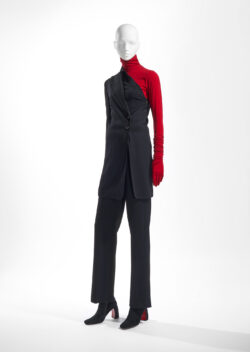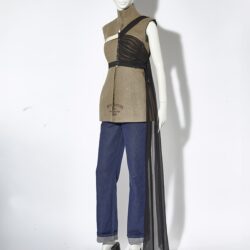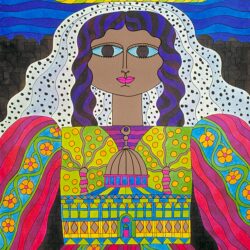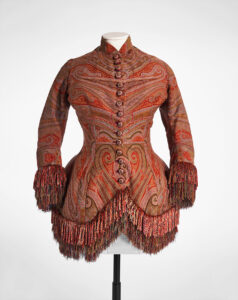Fashion and Interiors: Interwoven Disciplines

Fashion and interior design are in constant dialogue, reflecting and influencing the ever-evolving societal landscape. MoMu explores that interaction with a particular focus on gender. Curator Romy Cockx offers a preview here of what visitors can expect from the exhibition.
We invite our visitors to explore the relationship between fashion and interior design through the lens of gender, but above all, we aim to showcase the visual fusion between these two disciplines.
Why did you opt for this gender perspective?
ROMY COCKX: "As fashion transitioned into a modern system from 1870 onwards, with designers presenting their collections biannually, a bourgeois ideal of domesticity prevailed in the West. While men ventured out to work, women were largely expected to cultivate the domestic sphere. It fell to them to communicate the family's status through their attire and tastefully appointed homes. With an emphasis on comfort, they adorned their interiors with cushions, draped fabrics, and handcrafted items. From that point onward, femininity became closely associated with both fashion and interior decoration. In the exhibition, we illustrate this connection with historical silhouettes from the MoMu Collection alongside captivating portraits by the Belgian painter Alfred Stevens."

Was there any reaction to this?
RC: "Some male designers, such as Henry van de Velde, actively 'fought' against excessive ornamentation in women's fashion and interior decoration. At the end of the 19th century, Van de Velde created his first 'total work of art', Villa Bloemenwerf in Brussels. He designed not only the house itself, but also all the furniture, utensils, and even the clothing for his wife, Maria Sèthe. She was closely involved in this endeavour: she oversaw the renovation work, designed wallpaper, and even helped to create the gowns. Josef Hoffmann and the Wiener Werkstätte also began designing women's clothing as an integral part of their concept of a 'total work of art'. This, in turn, inspired the French fashion designer Paul Poiret to establish his own interior design department. Simultaneously, we observe how the association between fashion, femininity, and decoration persisted in the discourse of modernist architects, such as Adolf Loos and Le Corbusier. For them, the understated men's suit represented the epitome of modern ideals like functionality and rationality, while 'fashion' itself was dismissed as a frivolous feminine pursuit."
Are there any fashion designers today who approach clothing and interiors as a 'total work of art'?
RC: "Absolutely, too many to mention. I opted to highlight a few Belgian designers. The exhibition highlights the importance of Le Corbusier on the life and work of Ann Demeulemeester. Together with her husband Patrick Robyn, she has looked after the renowned architect's only Belgian home for 40 years. Additionally, Martin Margiela created a reconstruction of several interiors from his time as head of Maison Martin Margiela specifically for the exhibition."

If you could take home one object from the exhibition, what would you choose?
RC: "To maintain gender balance, I would pick two," [laughs]. "First, the 'daybed' by Lilly Reich, a highly regarded interior and fashion designer during the interwar period." From 1926, she worked closely with architect Ludwig Mies van der Rohe. Together, they designed furniture, exhibitions and interiors. Their creative visions influenced one another, making it challenging to definitively attribute specific designs. However, recent research indicates that the daybed is indeed her design, despite still being marketed as a creation by Mies van der Rohe. Gender mechanisms are complex and I hope the exhibition conveys this in a nuanced way."
RC: "I’ll also opt for Raf Simons' take on Gaetano Pesce's iconic Feltri armchair. He created a layered vision of American culture for Calvin Klein. Patchwork quilts, a traditional domestic craft, were a recurring feature in his collections for the brand. The patterns on vintage quilts carry symbolic meanings, representing home, warmth, and security. I therefore view Simons' patchwork-covered versions of the Feltri as comfort blankets for turbulent times."
What reflections do you aim to evoke in visitors to this exhibition?
RC: "More than anything, I hope they discover the beauty in the historical and contemporary objects and how these reflect the fascinating dialogue between fashion and interior design. I also hope the exhibition demonstrates that movements, styles, and trends are shaped by action and reaction. Because social norms and ideas are products of their time, so too are gender roles, making them inherently relative. The question is: What makes you feel good as an individual in relation to your environment? How do you want to dress and live in today’s world?"
Fashion & Interiors. A Gendered Affair. is on view from 29 March through 3 August 2025. More info and tickets available here





